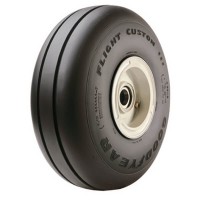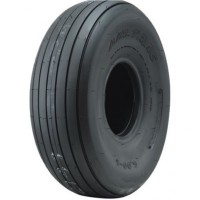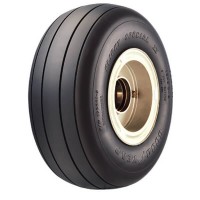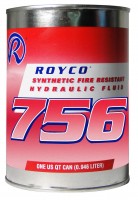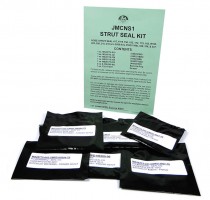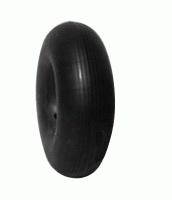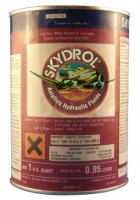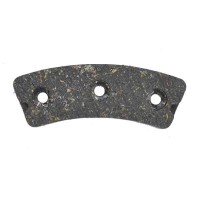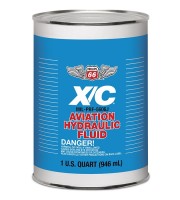1-877-795-2278 | info@aircraftspruce.ca
Aircraft Spruce Canada
Brantford, ON Canada
Corona, CA | Peachtree City, GA
Chicago, IL | Wasilla, AK
Aircraft Spruce Canada
Brantford, ON Canada
Corona, CA | Peachtree City, GA
Chicago, IL | Wasilla, AK
THE AVIATION SUPERSTORE FOR ALL YOUR AIRCRAFT & PILOT NEEDS | 877-795-2278
Exxon Mobil Hyjet V
Select Quantity:
QuartCase of 24 QuartsGallonCase of 6 Gallons55 GallonOverview
|
Mobil HyJet V is a Type V fire-resistant phosphate ester hydraulic fluid, which is superior in thermal and hydrolytic stability to commercially available Type IV hydraulic fluids. Better stability means the extent of fluid degradation in aircraft systems will be less than Type IV fluids, in-service fluid life will be longer, and consequently aircraft operator maintenance costs may be lower.
HyJet V provides excellent high and low temperature flow properties (kinematic viscosities) and rust protection. HyJet V has also demonstrated an improvement over the erosion protection performance afforded by Type IV fluids. |
Features
| Features | Advantages and Potential Benefits |
|---|---|
| Higher stability than Type IV fluids | Longer fluid life Lesser need to replace fluid due to degradation, Reduced hydraulic system maintenance costs |
| Meets Boeing BMS 3-11 and SAE AS1241 Type IV and Type V requirements | Improved flammability characteristics over meeting just the Type V requirements |
| Low density | Reduced weight of the hydraulic fluid carried by aircraft, Reduced aircraft fuel consumption, Lower operating costs |
| Excellent rust protection | Reduced risk of equipment damage in the event of major water contamination |
| Excellent low and high temperature viscosity balance | Precise hydraulic system control and response even during extended range/polar flights, Longer aircraft hydraulic system equipment life |
| Excellent deposit control | Longer aircraft hydraulic system equipment life, Reduced maintenance costs |
| Improved protection against electro-chemical corrosion (erosion) | Protection against servo valve and pump damage |
| Fully compatible with all approved Type IV and Type V phosphate ester hydraulic fluids | Flexibility in use by airline operators |
Specifications and Approvals
- AIRBUS NSA 307110N- Type V
- BOEING, BMS 3-11P, Type V, Grade A and C
- Boeing-Long Beach DMS2014H- Type 5
- GULFSTREAM 1159SCH302J- Type V
Applications
- Mobil HyJet V is designed for use in commercial aircraft phosphate ester hydraulic systems. It meets the SAE AS1241 requirements and is included in commercial and business airframe manufacturer Qualified Products Lists, as shown below. It is compatible in all proportions with commercial Type IV and Type V phosphate ester aviation hydraulic fluids.
Documents
- Product Data Sheet (PDF)
- Product Fact Sheet (PDF)
- MSDS
Properties
| Property | |
|---|---|
| Acid Number, mgKOH/g, ASTM D974 | 0.04 |
| Autoignition Temperature, F, ASTM D2155 | >427 (800) |
| Bulk Modulus, Isothermal secant at 100 F/3000 psi, psi, ASTM D6793 | 210000 |
| Calcium, ppm, ICPES | 4 |
| Chlorine, ppm, XRF | 10 |
| Coefficient of Thermal Expansion, 25 to 100 C, per degree C, API MPMS 11.1 | 0.00086 (0.00048) |
| Conductivity @ 20 C, MicS/cm, ASTM D2624 | 0.4 |
| Density @ 60 F, lb/USg, ASTM D4052 | 1.000 (8.35) |
| Fire Point, Cleveland Open Cup, °F, ASTM D92 | 186 (366) |
| Flash Point, Cleveland Open Cup, °F, ASTM D92 | 174 (346) |
| Foam, Sequence II, Collapse Time, s, ASTM D892 | 23/13 |
| Foam, Sequence III, Collapse Time, s, ASTM D892 | 34/19 |
| Four-Ball Wear Test, Scar Diameter, 10 kg, 600 rpm, 1 h, 75 C, mm, ASTM D4172 (mod) | 0.26 |
| Four-Ball Wear Test, Scar Diameter, 4 kg, 600 rpm, 1 h, 75 C, mm, ASTM D4172 (mod) | 0.21 |
| Four-Ball Wear Test, Scar Diameter, 40 kg, 600 rpm, 1 h, 75 C, mm, ASTM D4172 (mod) | 0.63 |
| Kinematic Viscosity @ 100 F, mm2/s, ASTM D445 | 10.6 |
| Kinematic Viscosity @ 127.6 C, mm2/s, ASTM D445 | 2.6 |
| Kinematic Viscosity @ -15 F, mm2/s, ASTM D445 | 132 |
| Kinematic Viscosity @ 210 F, mm2/s, ASTM D445 | 3.6 |
| Kinematic Viscosity @ -65 F, mm2/s, ASTM D445 | 1350 |
| Potassium, ppm, ICPES/AA | 38 |
| Shear Stability, % Kinematic Viscosity Loss, 40 C, %, ASTM D5621 | 21 |
| Sodium, ppm, ICPES | 1 |
| Specific Gravity, 25 C/25 C, ASTM D4052 | 0.997 |
| Specific Heat Capacity, cal/g-deg.C, Reference | 0.42 |
| Sulfur, ppm, ICPES/XRF | 51 |
| Thermal Conductivity at 40 C, Cal / (cm s oC), Reference | 33x10^-5 (0.0799) |
| Viscosity Index, ASTM D2270 | 280 |
| Water Content, mass%, ASTM D6304 | 0.09 |
| Pour Point, °F, ASTM D97 / ASTM D5950 | -80 |
| NAS 1638 Class, HIAC, ISO 11500 | 7 |
Q&A
Please note, Aircraft Spruce Canada's personnel are not certified aircraft mechanics and can only provide general support and ideas, which should not be relied upon or implemented in lieu of consulting an A&P or other qualified technician. Aircraft Spruce Canada assumes no responsibility or liability for any issue or problem which may arise from any repair, modification or other work done from this knowledge base. Any product eligibility information provided here is based on general application guides and we recommend always referring to your specific aircraft parts manual, the parts manufacturer or consulting with a qualified mechanic.

 Aircraft Spruce Canada
Aircraft Spruce Canada












